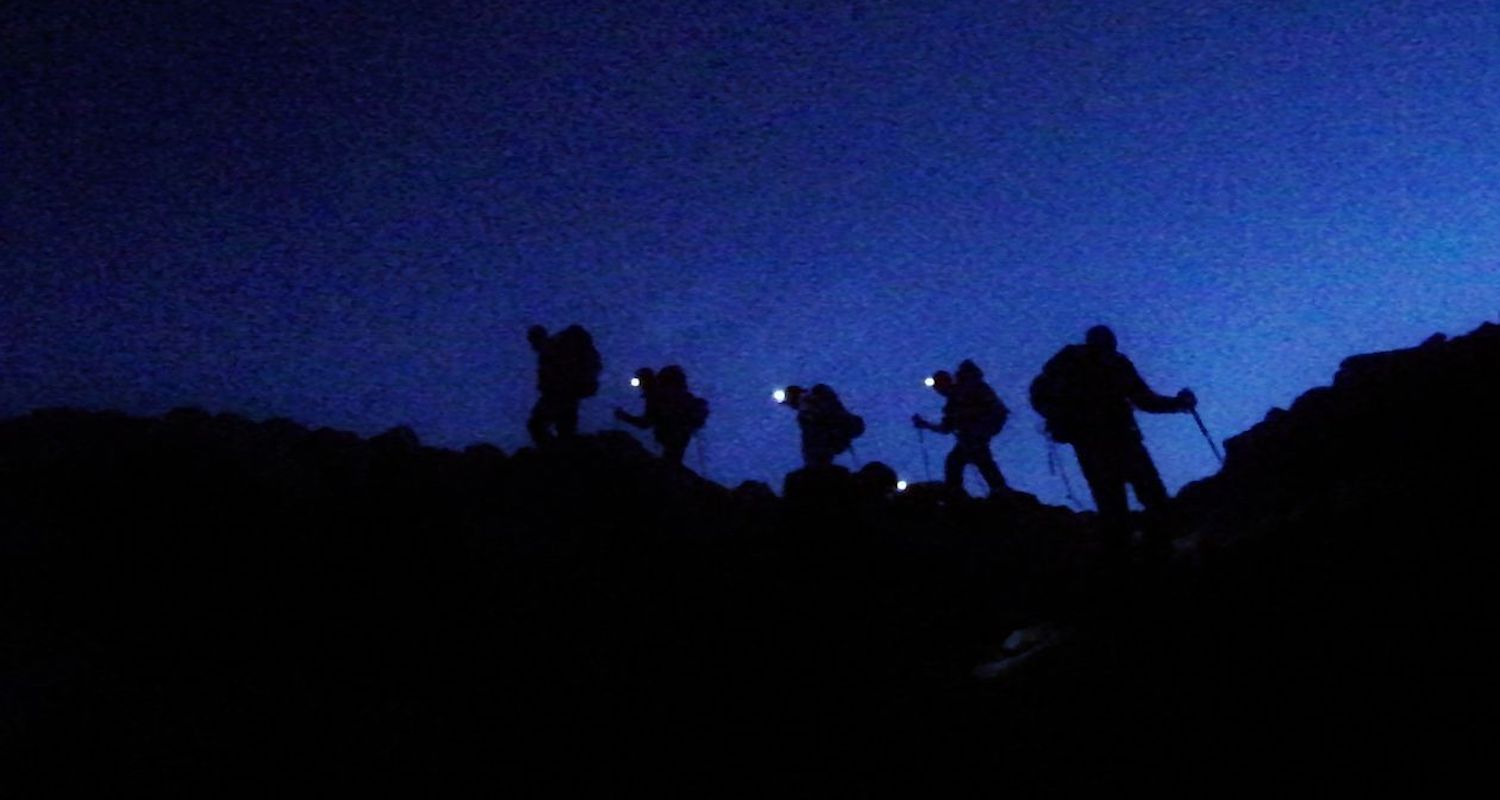At midnight, seven of us assembled at Barafu Hut. It was cold, but it could have been worse.
We expected temperatures between minus five and minus fifteen. As it turned out, it was on the balmy side at five-below (C). It was also clear with light wind. One couldn't ask for better conditions at 15,000 feet.
I drifted away. Years ago, I had learned to fly a piston-engine airplane. Optimistically, the service ceiling for that little Piper was 10,000 feet. You "hit" that ceiling when the engine could no longer pull the craft fast enough for the wings to generate the needed lift. The stall warning indicator would scream (along with the pilot!) and one wing or the other would typically fail. The plane would shudder and hang for a second before dipping to one side. A plunge would follow, the universe spiraling around the failed wing. Without timely correction it would corkscrew all the way back to earth. Needless to say, those stories don't end well.
At this moment the air surrounding us on the slopes of Kilimanjaro was too thin to facilitate the flight of that little Piper. Yet somehow we were breathing it (or trying to!). What was even more anomalous is that in the next seven hours we needed to gain the better part of another vertical mile. If successful in the attempt, that add-on would move us from "High" to "Extreme Altitude" and to the summit rim by daybreak.
At a high angle of attack, the airflow separates from the airfoil. The wing then ceases to function as a wing and turns into a "brick." Image from here.
At the briefing, Robert had given us other instructions as well. Some were encouraging; others were cautionary.
"It's just like what you've done already, with two extra challenges: sight limits and the cold."
"Wear five layers on top. Three on the bottom."
"Water bottles will freeze if exposed. Keep them tucked in."
"Hopefully we'll meet the others on the summit."
Indeed.
Three other members of the team had walked out of camp an hour earlier: Mo, Vlad, and Rachael. We assumed they were well above us by now, already pressing the envelope. It was our turn.
Gaiters keep pebbles and snow out of the boots.
Packs on, mittens secured, gaiters zipped, we stamped outside the mess. Headlamps were strapped over beanies and 'clavas. Our breath curled up and through these projecting beams. It was savage and ethereal.
Robert called us close. "Let's share a moment of dedication."
No one was sure what he meant. We huddled. What followed was a spiritual experience in an African midnight. Dangling between heaven and earth, Robert lifted a prayer. He thanked God for the majesty of the mountain and asked for strength and safety. I shot a sideways glance at Jason. He lifted his eyebrows in a look of amazement. Robert had never spoken of faith before. But it flowed out of him, pure and earnest.
It was a beautiful thing.
We joined him in the "Amen" (re: the old saying about no atheists in a foxhole.).
A moment of stillness passed. We just looked at each other, silly-like, hearts thumping. Then Robert smiled with a twinkle. Pole, pole ("slowly, slowly").
He headed upslope. We fell into line and tramped out of camp. It was the big push.
Climbing by headlamp has special challenges (and benefits). Image from here.




